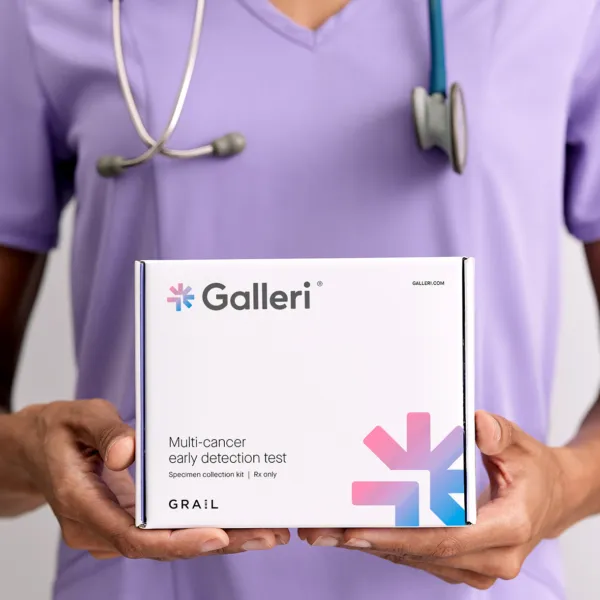The future of life insurance starts here
GRAIL's Life Insurance Advisory Committee is committed to raising awareness of the benefits of multi-cancer early detection testing. This innovative group of industry leaders has an important goal: Help one million life insurance policyholders screen for some of the deadliest cancers with the Galleri test.

Meet our Life Insurance Advisory Committee members
These forward-thinking industry leaders are embracing innovative solutions that go beyond traditional coverage.








Learn more about how the Galleri test can help your clients today
Only five out of 100+ known cancer types have recommended screening tests.1,2 Your clients deserve more. Introduce them to Galleri® – the first-of-its-kind multi-cancer early detection test that screens for some of the deadliest cancers before they become symptomatic, including pancreatic, ovarian, and liver.3*
The Galleri test does not detect a signal for all cancers and not all cancers can be detected in the blood. False positive and false negative results do occur. The Galleri test should be used in addition to healthcare provider recommended screening tests.
See Important Safety Information below.
* Sensitivity in study participants with - Pancreas cancer: 83.7% overall (61.9% stage I, 60.0% stage II, 85.7% stage III, 95.9% stage IV). Ovary cancer: 83.1% overall (50.0% stage I, 80.0% stage II, 87.1% stage III, 94.7% stage IV). Liver/bile duct cancer: 93.5% overall (100% stage I, 70.0% stage II, 100% stage III, 100% stage IV).

Have a question?
Use the form to submit a question to the committee.
By submitting this form, you agree to GRAIL’s use of this information to contact you, including for marketing purposes. Please do not include any sensitive or confidential information, including health information. For more information, please refer to our privacy notice.
The Galleri test is recommended for use in adults with an elevated risk for cancer, such as those age 50 or older. The test does not detect all cancers and should be used in addition to routine cancer screening tests recommended by a healthcare provider. The Galleri test is intended to detect cancer signals and predict where in the body the cancer signal is located. Use of the test is not recommended in individuals who are pregnant, 21 years old or younger, or undergoing active cancer treatment.
Results should be interpreted by a healthcare provider in the context of medical history, clinical signs, and symptoms. A test result of No Cancer Signal Detected does not rule out cancer. A test result of Cancer Signal Detected requires confirmatory diagnostic evaluation by medically established procedures (e.g., imaging) to confirm cancer.
If cancer is not confirmed with further testing, it could mean that cancer is not present or testing was insufficient to detect cancer, including due to the cancer being located in a different part of the body. False positive (a cancer signal detected when cancer is not present) and false negative (a cancer signal not detected when cancer is present) test results do occur. Rx only.
The GRAIL clinical laboratory is certified under the Clinical Laboratory Improvement Amendments of 1988 (CLIA) and accredited by the College of American Pathologists. The Galleri test was developed — and its performance characteristics were determined — by GRAIL. The Galleri test has not been cleared or approved by the Food and Drug Administration. The GRAIL clinical laboratory is regulated under CLIA to perform high-complexity testing. The Galleri test is intended for clinical purposes.
US Preventive Services Task Force. Recommended cancer screening tests, Grade A,B,C. Accessed 29April2024. https://www.uspreventiveservicestaskforce.org/uspstf/topic_search_results
NIH National Cancer Institute. Understanding cancer: What is cancer? https://www.cancer.gov/about-cancer/understanding/what-is-cancer
Klein EA, Richards D, Cohn A, et al. Clinical validation of a targeted methylation-based multi-cancer early detection test using an independent validation set. Ann Oncol. 2021;32(9):1167-77. DOI: https://doi.org/10.1016/j.annonc.2021.05.806










